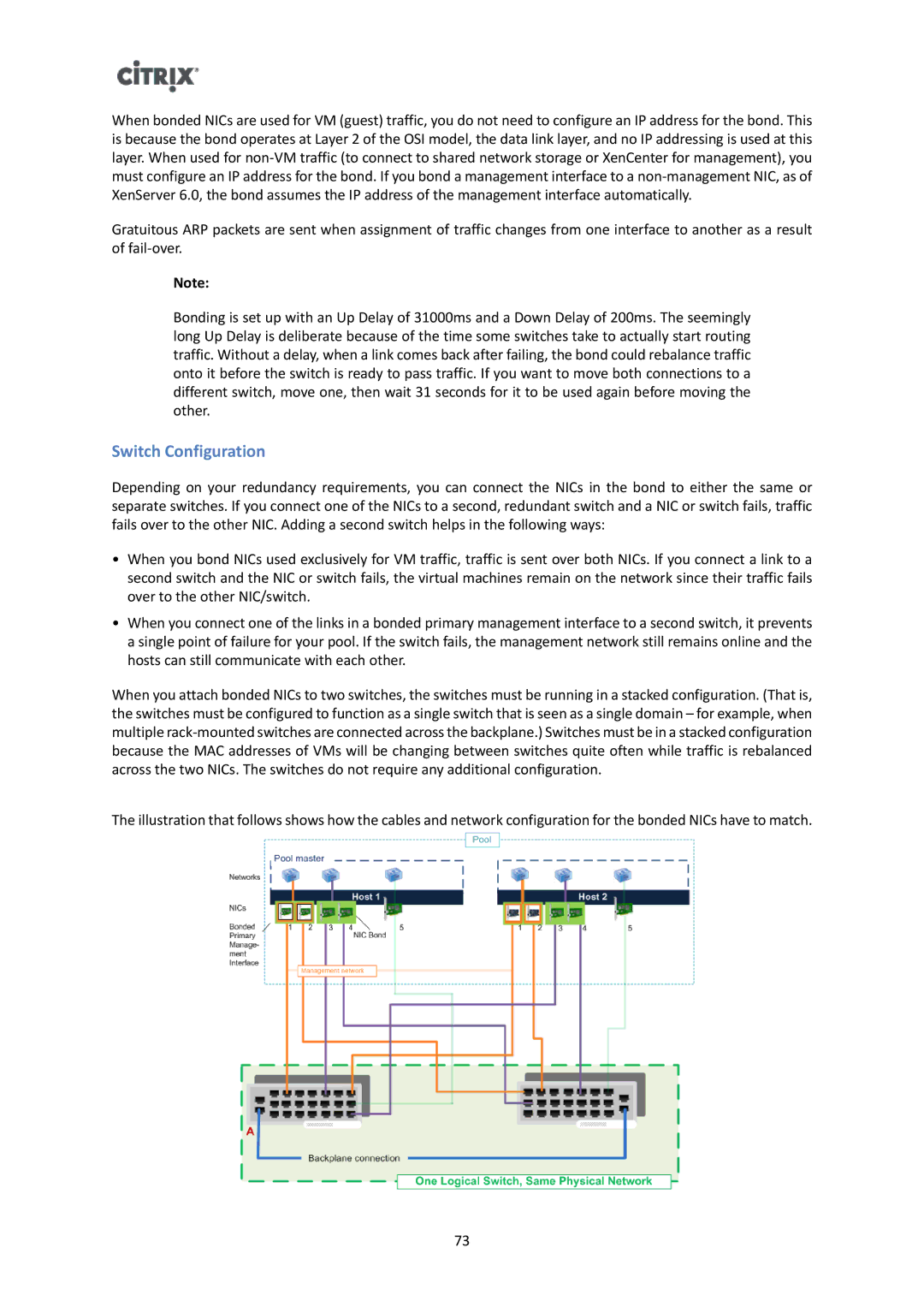
When bonded NICs are used for VM (guest) traffic, you do not need to configure an IP address for the bond. This is because the bond operates at Layer 2 of the OSI model, the data link layer, and no IP addressing is used at this layer. When used for
Gratuitous ARP packets are sent when assignment of traffic changes from one interface to another as a result of
Note:
Bonding is set up with an Up Delay of 31000ms and a Down Delay of 200ms. The seemingly long Up Delay is deliberate because of the time some switches take to actually start routing traffic. Without a delay, when a link comes back after failing, the bond could rebalance traffic onto it before the switch is ready to pass traffic. If you want to move both connections to a different switch, move one, then wait 31 seconds for it to be used again before moving the other.
Switch Configuration
Depending on your redundancy requirements, you can connect the NICs in the bond to either the same or separate switches. If you connect one of the NICs to a second, redundant switch and a NIC or switch fails, traffic fails over to the other NIC. Adding a second switch helps in the following ways:
•When you bond NICs used exclusively for VM traffic, traffic is sent over both NICs. If you connect a link to a second switch and the NIC or switch fails, the virtual machines remain on the network since their traffic fails over to the other NIC/switch.
•When you connect one of the links in a bonded primary management interface to a second switch, it prevents a single point of failure for your pool. If the switch fails, the management network still remains online and the hosts can still communicate with each other.
When you attach bonded NICs to two switches, the switches must be running in a stacked configuration. (That is, the switches must be configured to function as a single switch that is seen as a single domain – for example, when multiple
The illustration that follows shows how the cables and network configuration for the bonded NICs have to match.
73
